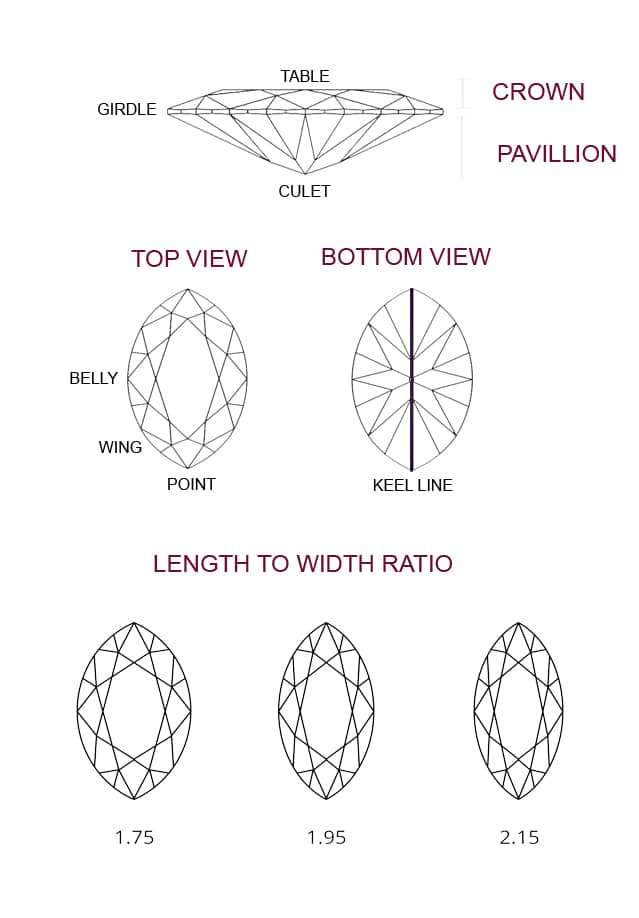Home » Diamond Education Center » MARQUISE CUTS
The

Shaped like an American football, with elongated curved sides and pointed ends, the Marquise Cut traces its history back to France in the mid 1700s, when King Louis XV is said to have commissioned a jeweler to design a cut that resembled the lips of his mistress, the Marquise de Pompadour, Jean Antoinette Poisson.
In time, the diamond shape came to be worn in the French court by nobility with the title of marquise, as a symbol of their status. A marquise is a noblewoman with the rank of marquess, or the wife of a marquess. In terms of the aristocratic pecking order, it comes between a duchess and a countess. An alternative name for the shape was navette, which means a little ship in Old French, and referred to its shape.
Popular in part because appears larger than a round diamond of similar weight, the Marquise Cut was a favored alternative to rounds through the 1970s, when the Princess Cut took its place.
There are several terms associated specifically with Marquise Cut stones. This include the belly, which is which is the widest area in the center where the sides curve out the most; the point, where the two curved sides meet at each end; the wing, which is the curved area stretching from the from the belly to the point; and the keel line, which is the bottom of the stone where the pavilion facets meet, running from point to point. Certain stones feature a culet at the center of the keel line.
The degree to which a Marquise Cut diamond is elongated will depend on its length to width ratio, with length being the distance from pointed tip to pointed tip and width being the furthest distance between two curved sides of the belly. A common ratio is 2:1, and according to GIA most Marquise Cuts submitted for grading display ration of between 1.6:1 to 2.2:1.
The girdle of the Marquise Cut is faceted, with “valley” and “hill” positions created where the upper and lower half facets meet. The girdles are often cut slightly thicker than required, in order to prevent chipping, which can be a problem with this shape. So as to prevent chipping at the pointed ends of the stone, cutters sometimes replace the large bezel facets with smaller facets, creating what is known as French tip.

Marquise Cut diamonds typically display a bow tie, which is a dark shadow resembling a bow tie that is visible across the width of the stone in the center of the table. While a feature of almost all such stones, the bow-tie can be a distracting element when the pavilion is either too shallow or too deep.
Given the shape of the diamond, symmetry is very important. The right and left sides, when looking at the stone from its two points should align with one another, creating a near mirror image.
MORE DIAMOND SHAPES
